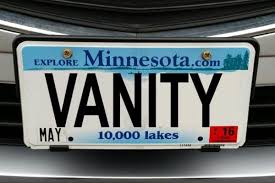Vanity Plates Latest Problem With Troubled Vehicle Registration System
 The state’s new online vehicle registration system was tens of millions of dollars over budget and years behind schedule. But the Department of Public Safety rolled out the first phase of the Minnesota Licensing and Registration System (MNLARS) with fanfare anyway in July.
The state’s new online vehicle registration system was tens of millions of dollars over budget and years behind schedule. But the Department of Public Safety rolled out the first phase of the Minnesota Licensing and Registration System (MNLARS) with fanfare anyway in July.
MNLARS will replace the core functionality for DVS operations. When finished, it will be an efficient, secure Web-based system for driver’s license, identification card and vehicle registration and ownership transactions.
But weeks later, technical issues still plague the system. The latest victims? Vehicle owners with vanity license plates, according to the Pioneer Press.
Minnesota’s troubled new vehicle registration system won’t let motorists transfer a host of popular special license plates when they buy a new car.
This includes:
- Personalized/vanity plates: your initials or cute phrase.
- Critical habitat plates: loon, deer, pheasant, fishing scene.
- Disability/wheelchair plates: the ones that let people with disabilities park in wheelchair spots.
- Military honor plates: such as Vietnam Veteran or Purple Heart.
The new and not-so improved MNLARS vehicle registration system has been reminiscent of the I.T. nightmare that characterized the state’s disastrous MNsure website debut. The Minnesota House of Representatives even set up an online hotline to file complains here.
Motorists can still get all those plates, but they’ll have to be new ones. So if you’re one of the nearly 80,000 Minnesotans with vanity plates, you won’t be able to get that exact phrase transferred.
Either way, you’ll have to pay a $10 “plate fee” that you wouldn’t have to pay to transfer existing plates.
DPS bureaucrats say they’re working on a solution, but can’t say when it will be up and running. Meantime, too bad for the surprising number of Minnesotans with vanity plates.
In all, there are some 668,000 specialty plates on vehicles in Minnesota. As of the beginning of November, the problem has affected about 1,000 people who have bought new cars and sought to transfer their tabs to the new vehicle, officials said.
“It is not a large volume, but I certainly understand people’s frustration,” O’Hern said.
Brace for more rough going at Motor and Vehicle Services. Phase two of the online system–new driver’s license technology–will be introduced sometime in 2018, complicated by the federal government’s October 2018 deadline to implement REAL I.D. coming down the road at the same time.